Today our group is eager to meet the world’s most famous tortoise, Lonesome George — hopefully he’s not feeling too shy.
George is a long-time resident of the Charles Darwin Research Station on Santa Cruz Island. We’ll meet his fellow dorm mates today too — I like to think of this place as college for turtles.
On our way to the Station we pass by mangroves, which are shrubs that grow in tropical salt water. Notice how high the water line rises during high tide — the salinity of the water turns the shrub roots black but doesn’t kill them. Mangroves are all over the islands.


If memory serves correct, these are young males. Galapagos tortoises can live to be 100 years old in the wild and 170 years old in captivity. Food, water, meds… I’ll have what they’re having.
These guys chomp on leaves while our group snaps photos. Like practically every other animal we’ve encountered thus far, they do not care about humans wielding cameras.



We take turns posing with them. They literally turns their backs on me.

Eric took this photo when I wasn’t paying attention and then kindly emailed it to me after our return (along with a few others at the bottom of this post). It is SO nice to round out trip photos with shots taken by fellow passengers who caught moments you didn’t. Plus I don’t take many photos of myself while traveling alone, so I appreciate the extra coverage! As do my parents.
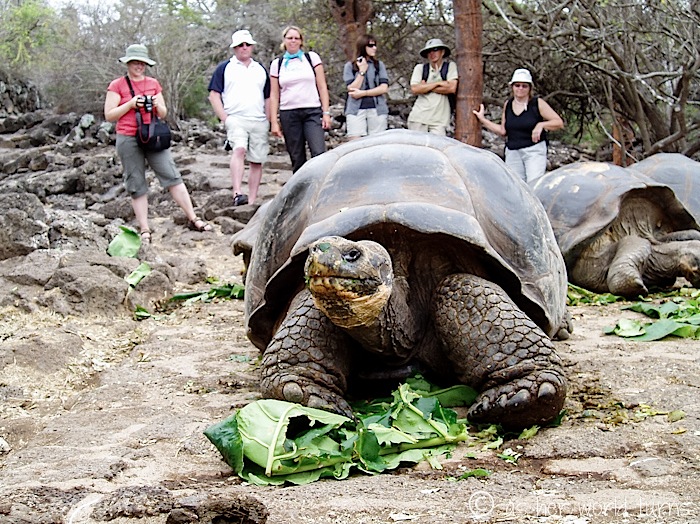
And I believe the next few photos are of female tortoises.
The texture of the skin on their necks is fascinating.




This land iguana makes sure we don’t mistakenly assume this place is all about the tortoises. Darwin cared about other reptiles too.


Finally we approach the famous Lonesome George! Over the past few decades he has become emblematic of conservation efforts in the Galapagos.

Until his death in June of 2012, George was the last known living male Pinta Island tortoise. Despite repeated attempts to mate with subspecies (who had the closest DNA to George), he was not able to successfully reproduce in captivity and this species is now extinct.
Since I visited the Galapagos in 2009, Lonesome George was still with us. But he’s very shy this particular day and we only catch a glimpse of him munching on leaves in the distance. Can you spot him?

Next we find baby tortoises.

They are embedded with barcodes to track and monitor each species in residence.

Look at all the babies! They have 170 good years in front of them. So they’ll be alive until around the year 2180.

Most of these guys are hiding under rocks:

After the tour ends, our group sets off on a 25 minute walk to Tortuga Bay. You can only reach this area by foot — we are told the steep shoreline makes it difficult for the pangas to land so our best bet is to walk the beach trail. We sign in with the local National Park Service office and begin the carefully groomed path.

It’s a cloudy morning but we can imagine how pretty this would be on a sunny day.

I’m feeling a little nauseous at this point and take the opportunity to lie down.
After a few minutes, for no reason in particular, I lift up my head. This is what I see:

AHHHH!!! I’m shocked it snuck up on me like that.

As the iguana crawls away, I put my hat over my head and try to catch a few more ZZZ’s to settle my stomach before the walk back.
Eric snapped the two pictures below, which I get such a kick out of.
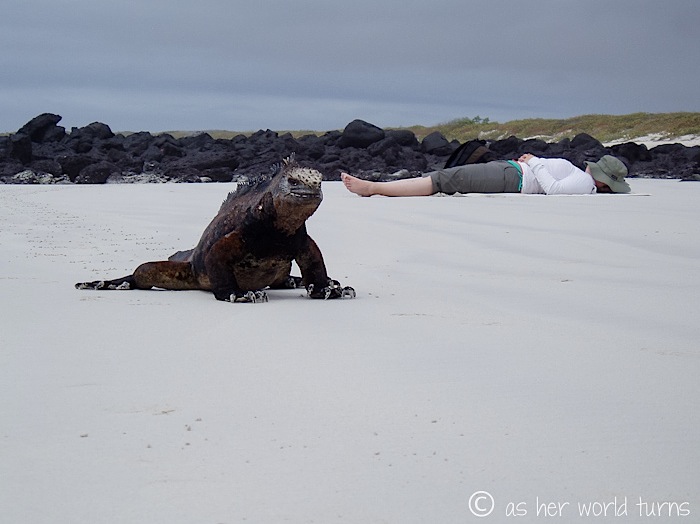
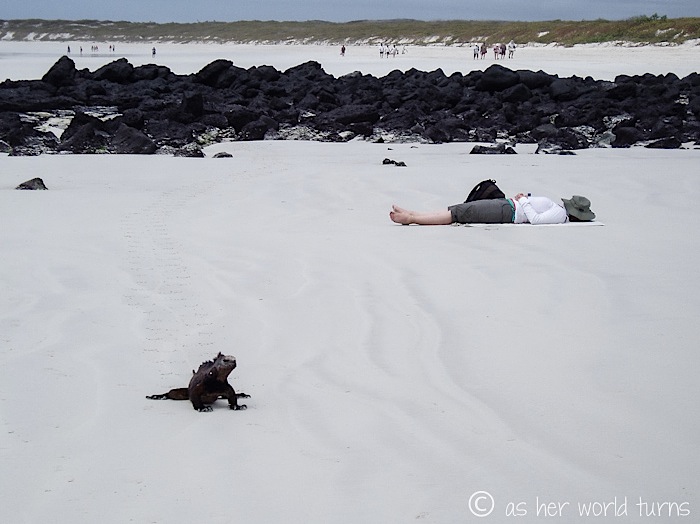
Again, your fellow passengers are great photo resources! Many thanks to Eric and Abby for sharing their photos with me!


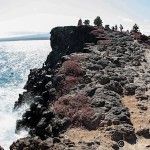
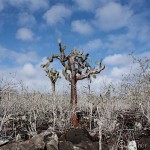
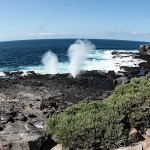
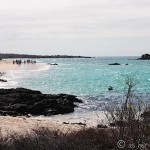
What an amazing place. Awesome photography!!
Thank you! I hope you and Dad get down there one day – it’s such a stunning place.